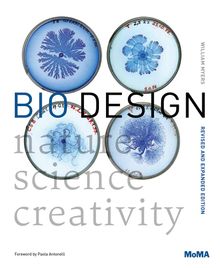| |||||||||||||||||||||||||||
CURATOR INDEX
|
|
STATUS: Out of stock indefinitely. |
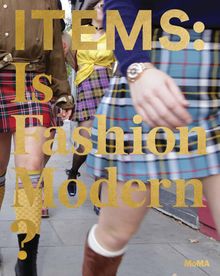 Items: Is Fashion Modern?
Items: Is Fashion Modern?
Published by The Museum of Modern Art, New York.
Edited with text by Paola Antonelli, Michelle Millar Fisher. Text by Luke Baker, Anna Burckhardt, Stephanie Kramer, Mei Mei Rado, Jennifer Tobias.
Arranged A-Z encyclopedia-style, it includes designs as iconic as Levi’s 501 jeans, the pearl necklace and Yves Saint Laurent’s Le Smoking, and as ancient and rich as the sari, the Breton shirt, the kippah and the keffiyeh.
The catalog accompanies the first fashion exhibition to be mounted at MoMA since 1944. An essay by curator Paola Antonelli opens the volume, highlighting the Museum’s unique perspective on fashion and exploring the latter's role in the changing international landscape of design. The 111 texts that follow trace the history of each item in relation to cultural forces past and present, touching on labor, marketing, technology, religion, politics, aesthetics and popular culture, among many others. These concise essays are richly illustrated with a lively mix of archival images, fashion photography, film stills and documentary shots.
Punctuating the book are newly commissioned portfolios by five international contemporary photographers—Omar Victor Diop, Bobby Doherty, Catherine Losing, Monika Mogi and Kristin-Lee Moolman. Each photographer was assigned to represent the objects in one alphabetically ordered section of the book, and their diverse responses bring a vibrant creative energy to the project.
Design objects are complex indicators of larger social, cultural, political and economic contexts, and fashion is no exception. Kaleidoscopic yet exacting, Items takes readers through the history and significance of clothing that has changed the world, from the bucket hat’s multifaceted sartorial journey to the ubiquity and perennial popularity of the white t-shirt and the ever-changing silhouette of the little black dress. It locates new centers of gravity for the field of fashion and asserts its role as an incisive and confident contributor to the broad pantheon of design and the visual arts.
Paola Antonelli is Senior Curator of the Department of Architecture and Design as well as the Director of R&D at The Museum of Modern Art, New York.
PUBLISHER
The Museum of Modern Art, New York
BOOK FORMAT
Hardcover, 8 x 10 in. / 288 pgs / 350 color.
PUBLISHING STATUS
Pub Date 10/24/2017
Active
DISTRIBUTION
D.A.P. Exclusive
Catalog: FALL 2017 p. 27
PRODUCT DETAILS
ISBN 9781633450363 TRADE
List Price: $45.00 CAD $60.00
AVAILABILITY
In stock
in stock $45.00 Free Shipping UPS GROUND IN THE CONTINENTAL U.S. |
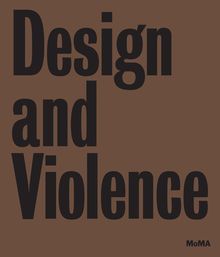 Design and Violence
Design and Violence
Published by The Museum of Modern Art, New York.
Edited by Paola Antonelli, Jamer Hunt, Michelle Fisher. Text by Anne-Marie Slaughter, William Gibson, Ingrid Newkirk, et al.
Paola Antonelli is the Director of Research & Development and Senior Curator in the Department of Architecture & Design at The Museum of Modern Art, New York.
Jamer Hunt is a design critic and the founding director of the MFA program in Transdisciplinary Design at Parsons The New School for Design, New York.
Kate Carmody is an independent design curator who has worked for institutions including the Natural History Museum, the Cooper Hewitt, and MoMA.
Michelle Fisher is a Curatorial Assistant in the Department of Architecture and Design at MoMA.
PUBLISHER
The Museum of Modern Art, New York
BOOK FORMAT
Hardcover, 9 x 10.5 in. / 232 pgs / 200 color.
PUBLISHING STATUS
Pub Date 6/23/2015
Active
DISTRIBUTION
D.A.P. Exclusive
Catalog: SPRING 2015 p. 88
PRODUCT DETAILS
ISBN 9780870709685 TRADE
List Price: $45.00 CAD $60.00
AVAILABILITY
In stock
in stock $45.00 Free Shipping UPS GROUND IN THE CONTINENTAL U.S. |
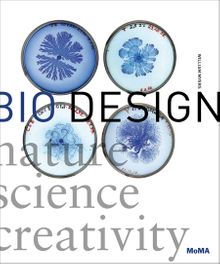 Bio Design
Bio Design
Nature + Science + Creativity
Published by The Museum of Modern Art, New York.
Edited with text by William Myers. Foreword by Paola Antonelli.
William Myers is a curator, writer, and teacher based in Amsterdam. He is the author of Bio Design: Nature + Science + Creativity.
Paola Antonelli is Senior Curator of Department of Architecture and Design, as well as the Director of R&D at The Museum of Modern Art.
PUBLISHER
The Museum of Modern Art, New York
BOOK FORMAT
Paperback, 8.25 x 10 in. / 288 pgs / 400 color.
PUBLISHING STATUS
Pub Date 10/31/2014
Out of print
DISTRIBUTION
D.A.P. Exclusive
Catalog: FALL 2014 p. 85
PRODUCT DETAILS
ISBN 9780870709524 TRADE
List Price: $29.95 CAD $35.00
AVAILABILITY
Not available
STATUS: Out of print | 00/00/00 For assistance locating a copy, please see our list of recommended out of print specialists |
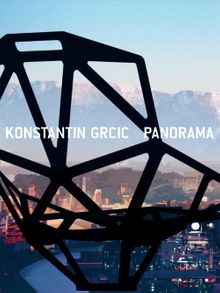 Konstantin Grcic: Panorama
Konstantin Grcic: Panorama
Catalogue Raisonné
Published by Vitra Design Museum.
Edited by Mateo Kries. Text by Paola Antonelli, Jan Boelen, Mario Carpo, Mateo Kries, Janna Lipsky, Jonathan Olivares, Louise Schouwenberg, Richard Sennett, Peter Sloterdijk.
PUBLISHER
Vitra Design Museum
BOOK FORMAT
Paperback, 8.25 x 10.75 in. / 300 pgs / 450 color.
PUBLISHING STATUS
Pub Date 9/30/2014
Active
DISTRIBUTION
D.A.P. Exclusive
Catalog: SPRING 2014 p. 48
PRODUCT DETAILS
ISBN 9783931936075 TRADE
List Price: $90.00 CAD $120.00
AVAILABILITY
In stock
in stock $90.00 Free Shipping UPS GROUND IN THE CONTINENTAL U.S. |
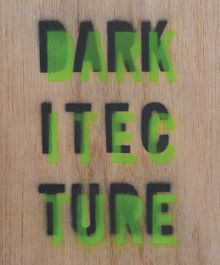 Darkitecture
Darkitecture
Learning Architecture for the Twenty-First Century
Published by Two Little Boys.
Edited by Iwona Blazwick. Text by Iain Aitch, Paola Antonelli, Iwona Blazwick, Nigel Coates, Emma Dexter, Tom Greenall Rosy Head, Jonathan Hill, Claire Jamieson, Anna Minton, Rowan Moore, Jake Moulson, Richard Noble, Lucy Pengilley Gibb , Fiona Raby, Alex Smith, Noam Toran, Anthony Vidler, Gilda Williams.
PUBLISHER
Two Little Boys
BOOK FORMAT
Paperback, 8.25 x 9.75 in. / 190 pgs / 105 color / 12 bw.
PUBLISHING STATUS
Pub Date 11/30/2013
Out of stock indefinitely
DISTRIBUTION
D.A.P. Exclusive
Catalog: FALL 2013 p. 166
PRODUCT DETAILS
ISBN 9780957429901 TRADE
List Price: $29.95 CAD $39.95
AVAILABILITY
Not available
STATUS: Out of stock indefinitely. |
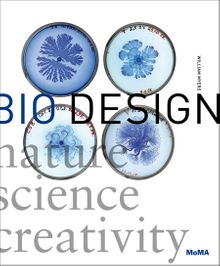 Bio Design
Bio Design
Nature + Science + Creativity
Published by The Museum of Modern Art, New York.
Edited and text by William Myers. Foreword by Paola Antonelli.
PUBLISHER
The Museum of Modern Art, New York
BOOK FORMAT
Hardcover, 8.25 x 10 in. / 288 pgs / 400 color.
PUBLISHING STATUS
Pub Date 12/31/2012
Out of stock indefinitely
DISTRIBUTION
D.A.P. Exclusive
Catalog: FALL 2012 p. 42
PRODUCT DETAILS
ISBN 9780870708442 TRADE
List Price: $50.00 CAD $60.00
AVAILABILITY
Not available
STATUS: Out of stock indefinitely. |
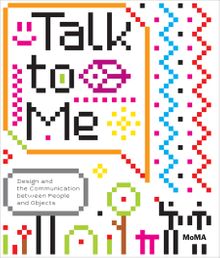 Talk to Me
Talk to Me
Design and the Communication between People and Objects
Published by The Museum of Modern Art, New York.
Edited by Paola Antonelli. Text by Paola Antonelli, Jamer Hunt, Alexandra Midal, Kevin Slavin, Khoi Vinh.
PUBLISHER
The Museum of Modern Art, New York
BOOK FORMAT
Paperback, 9 x 10.5 in. / 208 pgs / 407 color.
PUBLISHING STATUS
Pub Date 7/31/2011
Out of stock indefinitely
DISTRIBUTION
D.A.P. Exclusive
Catalog: FALL 2011 p. 175
PRODUCT DETAILS
ISBN 9780870707964 TRADE
List Price: $35.00 CAD $40.00
AVAILABILITY
Not available
STATUS: Out of stock indefinitely. |
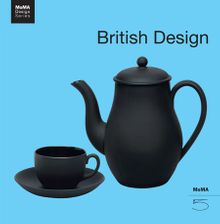 British Design
British Design
Published by The Museum of Modern Art, New York.
Text by Hugh Aldersey-Williams. Introduction by Paola Antonelli.
PUBLISHER
The Museum of Modern Art, New York
BOOK FORMAT
Flexi, 8.25 x 8.5 in. / 144 pgs / 105 color / 10 bw.
PUBLISHING STATUS
Pub Date 5/31/2010
Out of print
DISTRIBUTION
D.A.P. Exclusive
Catalog: SPRING 2010 p. 39
PRODUCT DETAILS
ISBN 9780870707810 TRADE
List Price: $29.95 CAD $39.95
AVAILABILITY
Not available
STATUS: Out of print | 00/00/00 For assistance locating a copy, please see our list of recommended out of print specialists |
 Japanese Design
Japanese Design
Published by The Museum of Modern Art, New York.
Text by Penny Sparke, Paola Antonelli.
Japanese designers' special ability to combine aesthetic tradition with contemporary visual culture and material innovation has created a distinctive and exceptionally successful design industry in Japan, which has produced such divergent icons of Modern design as Sori Yanagi's Butterfly Stool, the Sony Walkman, the Honey-Pop Armchair by Tokujin Yoshioka and the Toyota Prius. This volume traces the development of Japanese design from the country's craft revival in the early twentieth century to the extraordinary objects of high technology that have been a specialty of Japanese designers since the middle of the century. Antonelli's lively introduction provides an overview of Japan's design culture, while an essay and timeline by Penny Sparke illuminate the masterpieces of Modern Japanese design that are superbly reproduced in this volume's plate section.
PUBLISHER
The Museum of Modern Art, New York
BOOK FORMAT
Flexi, 8.25 x 8.25 in. / 160 pgs / 105 color / 10 bw.
PUBLISHING STATUS
Pub Date 7/31/2009
Out of print
DISTRIBUTION
D.A.P. Exclusive
Catalog: SPRING 2009 p. 56
PRODUCT DETAILS
ISBN 9780870707391 TRADE
List Price: $29.95 CAD $39.95
AVAILABILITY
Not available
STATUS: Out of print | 00/00/00 For assistance locating a copy, please see our list of recommended out of print specialists |
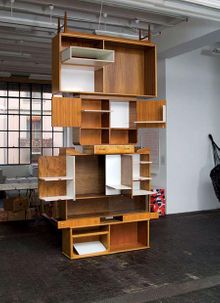 AC/DC: Contemporary Art/Contemporary Design
AC/DC: Contemporary Art/Contemporary Design
Published by JRP|Ringier.
Text by Paola Antonelli, Anthony Dunne, Alice Rawsthorn, Hal Foster, Gaetano Pesce, Wava Carpenter, Alexandra Midal, et al.
PUBLISHER
JRP|Ringier
BOOK FORMAT
Paperback, 6.25 x 8.75 in. / 280 pgs / 94 color / 2 bw.
PUBLISHING STATUS
Pub Date 8/31/2009
Out of print
DISTRIBUTION
D.A.P. Exclusive
Catalog: FALL 2009 p. 110
PRODUCT DETAILS
ISBN 9783037640128 TRADE
List Price: $45.00 CAD $60.00
AVAILABILITY
Not available
STATUS: Out of print | 00/00/00 For assistance locating a copy, please see our list of recommended out of print specialists |
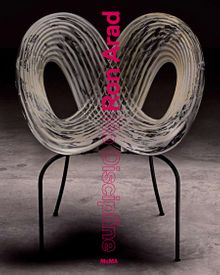 Ron Arad
Ron Arad
Published by The Museum of Modern Art, New York.
Edited by Paola Antonelli. Text by Paola Antonelli, Judith Benhamou-Huet, Jonathan Safran Foer, Marie-Laure Jousset, Ingeborg de Roode.
Through his own output and his decade-long tenure as the head of the Design Products graduate program at the Royal College of Art in London, Arad has greatly influenced the current debate on design's relationship with art, technology and innovation and nurtured some of the most promising young designers in today's international scene. Published to accompany the first major retrospective of Arad's work in the U.S., this volume features an interview with the artist and essays on his use of innovative materials and technology, his role as an educator and communicator on the importance of design and his place in the world of design and the larger art market. A lavishly illustrated plate section provides visual and written documentation of approximately 80 works.
PUBLISHER
The Museum of Modern Art, New York
BOOK FORMAT
Hardcover, 8 x 10 in. / 216 pgs / 300 color.
PUBLISHING STATUS
Pub Date 9/30/2009
Active
DISTRIBUTION
D.A.P. Exclusive
Catalog: SPRING 2009 p. 170
PRODUCT DETAILS
ISBN 9780870707599 TRADE
List Price: $45.00 CAD $60.00
AVAILABILITY
In stock
in stock $45.00 Free Shipping UPS GROUND IN THE CONTINENTAL U.S. |
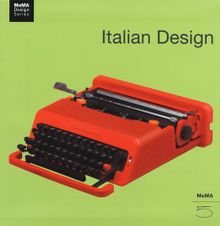 Italian Design
Italian Design
Published by The Museum of Modern Art, New York.
Text by Giampiero Bosoni, Paola Antonelli.
Giampiero Bosoni is an architect, curator and Associate Professor of Interior Architecture in the Faculty of Design at the Polytechnic University of Milan. He is the author of several surveys and monographs, including Il Modo Italiano: Italian Design and Avant-garde in the 20th Century and a monograph on Max Huber.
PUBLISHER
The Museum of Modern Art, New York
BOOK FORMAT
Flexibound, 8.5 x 8.5 in. / 160 pgs / 132 color / 16 bw.
PUBLISHING STATUS
Pub Date 10/1/2008
Out of print
DISTRIBUTION
D.A.P. Exclusive
Catalog: FALL 2008 p. 39
PRODUCT DETAILS
ISBN 9780870707384 TRADE
List Price: $29.95 CAD $39.95
AVAILABILITY
Not available
STATUS: Out of print | 00/00/00 For assistance locating a copy, please see our list of recommended out of print specialists |
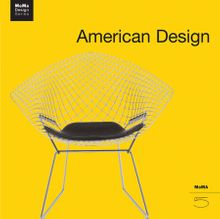 American Design
American Design
Published by The Museum of Modern Art, New York.
Text by Russell Flinchum, Paola Antonelli.
Paola Antonelli is Senior Curator in the Department of Architecture and Design at The Museum of Modern Art, New York.
Russell Flinchum teaches in the Design Criticism program at the School of Visual Arts and lectures for the Department of Education at The Museum of Modern Art. He has been the Archivist of the Century Association Archives Foundation since 1999.
PUBLISHER
The Museum of Modern Art, New York
BOOK FORMAT
Flexibound, 8.5 x 8.5 in. / 160 pgs / 121 color / 15 bw.
PUBLISHING STATUS
Pub Date 10/1/2008
Out of print
DISTRIBUTION
D.A.P. Exclusive
Catalog: FALL 2008 p. 39
PRODUCT DETAILS
ISBN 9780870707407 TRADE
List Price: $29.95 CAD $39.95
AVAILABILITY
Not available
STATUS: Out of print | 00/00/00 For assistance locating a copy, please see our list of recommended out of print specialists |
 Design and the Elastic Mind
Design and the Elastic Mind
Published by The Museum of Modern Art, New York.
Edited by Paola Antonelli. Text by Paola Antonelli, Hugh Aldersey-Williams, Peter Hall, Ted Sargent.
PUBLISHER
The Museum of Modern Art, New York
BOOK FORMAT
Paperback 7.5 x 9.5 in. / 192 pgs / 250 color.
PUBLISHING STATUS
Pub Date 3/1/2008
Out of stock indefinitely
DISTRIBUTION
D.A.P. Exclusive
Catalog: SPRING 2008 p. 156
PRODUCT DETAILS
ISBN 9780870707322 TRADE
List Price: $34.95 CAD $40.00
AVAILABILITY
Not available
STATUS: Out of stock indefinitely. |
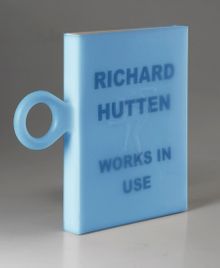 Richard Hutten: Works in Use
Richard Hutten: Works in Use
Published by Stichting Kunstboek.
Essays by Paola Antonelli, Aaron Betsky and Brigitte Fitoussi. Interviews with Humberto Campana, Konstantin Grcic, Karl Lagerfeld, Karim Rashid, et al.
PUBLISHER
Stichting Kunstboek
BOOK FORMAT
Boxed, 10.75 x 8.5 in. / 240 pgs / 700 color.
PUBLISHING STATUS
Pub Date 5/1/2006
No longer our product
DISTRIBUTION
D.A.P. Exclusive
Catalog: SPRING 2006 p. 42
PRODUCT DETAILS
ISBN 9789058561763 TRADE
List Price: $70.00 CAD $85.00
AVAILABILITY
Not available
 Total Living
Total Living
Art, Fashion, Design, Architecture, Communication
Published by Charta.
Edited by Maria Luisa Frisa, Mario Lupano and Stefano Tonchi. Essays by Paola Antonelli, Francesco Bonami, Michele Ciavarella, Emanuela De Cecco, Ricardo Dirindin, Maria Luisa Frisa, Mario Lupano, Roberto Monelli, Herbert Muschamp, Chee Pearlman, Michelle Serenini, Dietmar Steiner, Dejan Sudjic and Stefano Tonchi.
PUBLISHER
Charta
BOOK FORMAT
Paperback, 7.5 x 9.5 in. / 488 pgs / 453 color / 114 bw
PUBLISHING STATUS
Pub Date 8/2/2002
No longer our product
DISTRIBUTION
D.A.P. Exclusive
Catalog: FALL 2002
PRODUCT DETAILS
ISBN 9788881583713 TRADE
List Price: $39.95 CAD $50.00
AVAILABILITY
Not available
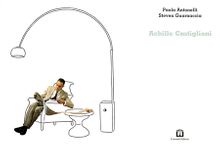 Achille Castiglioni
Achille Castiglioni
Published by Edizioni Corraini.
Essay by Paola Antonelli.
PUBLISHER
Edizioni Corraini
BOOK FORMAT
Paperback, 5.5 x 6.25 in. / 168 pgs / 70 bw.
PUBLISHING STATUS
Pub Date 3/2/2001
Out of print
DISTRIBUTION
D.A.P. Exclusive
Catalog: SPRING 2001
PRODUCT DETAILS
ISBN 9788887942026 TRADE
List Price: $24.95 CAD $27.50
AVAILABILITY
Not available
STATUS: Out of print | 00/00/00 For assistance locating a copy, please see our list of recommended out of print specialists |
